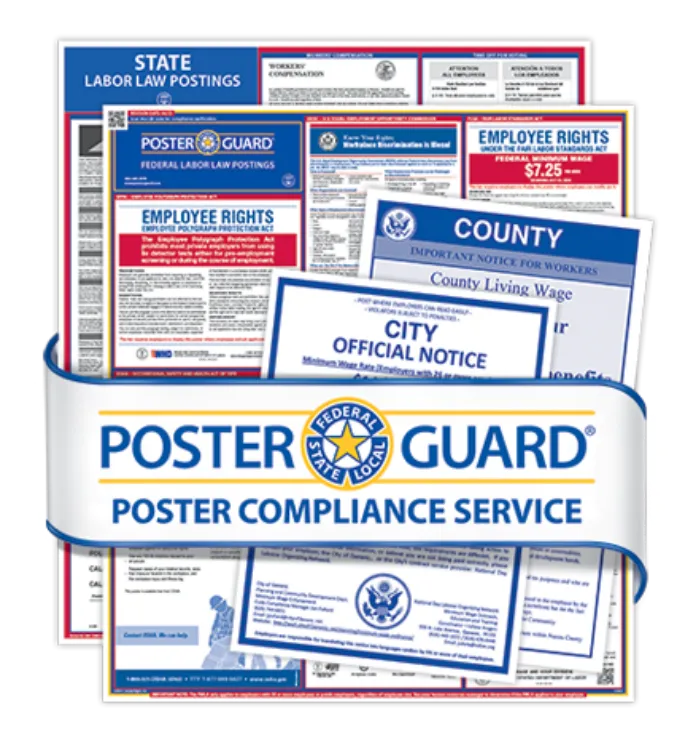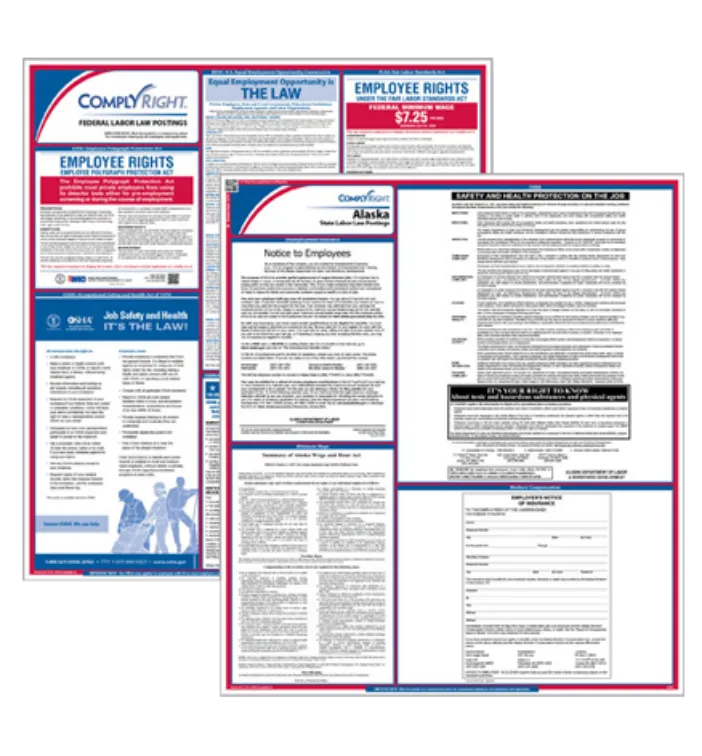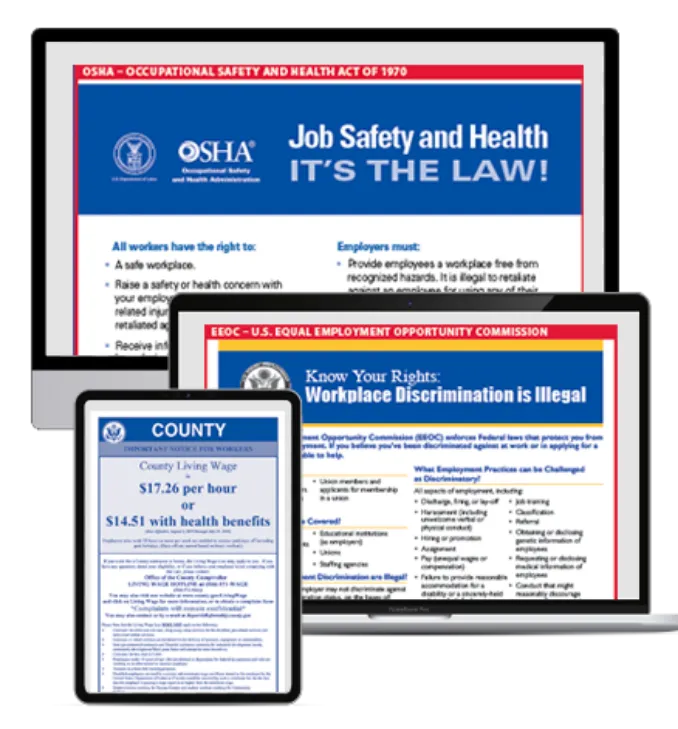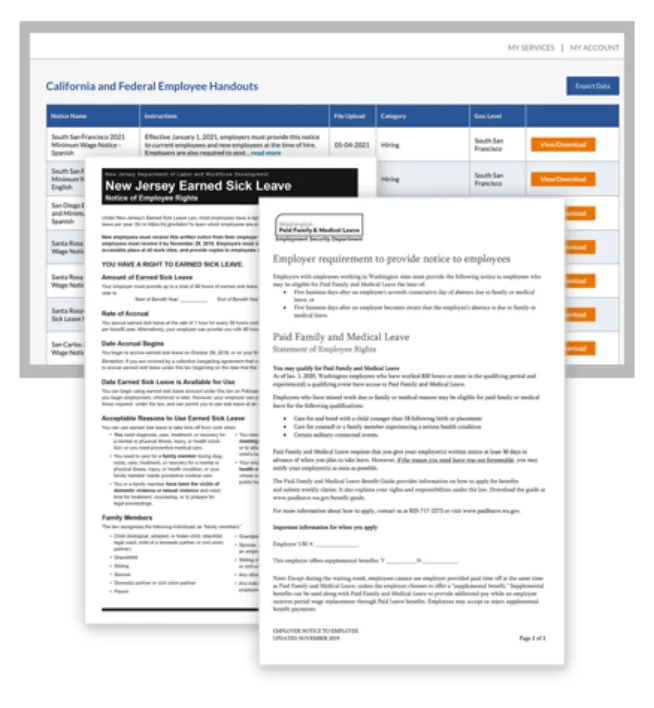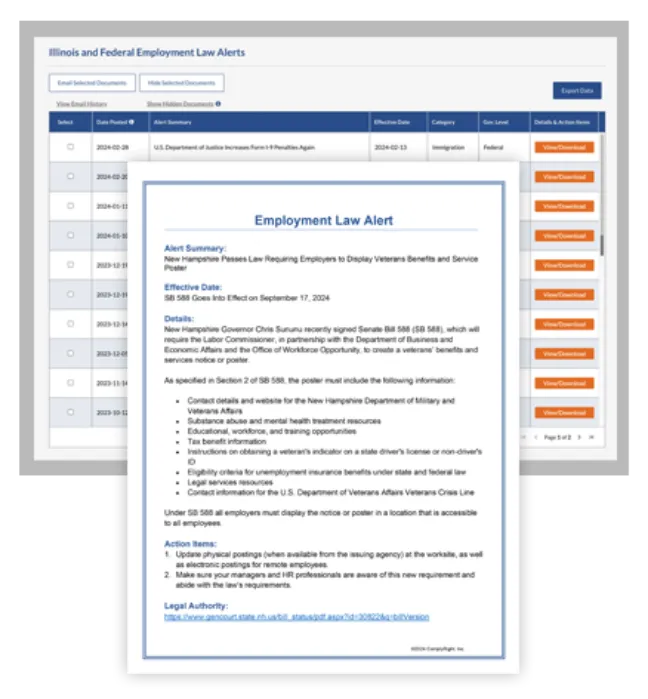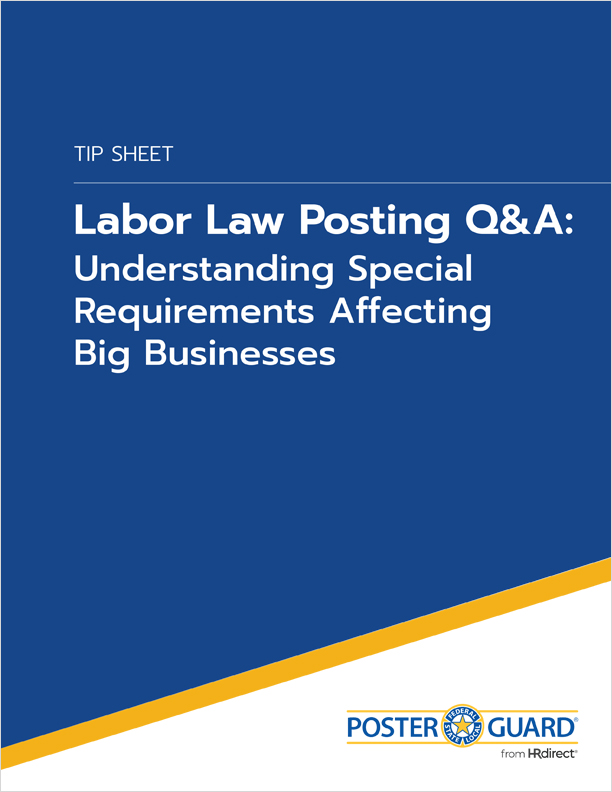Are you contemplating managing poster compliance on your own? Proceed with caution! Although certain government posters are available for free, you’ll come up against expenses in other ways. For your business to take on DIY poster compliance (especially if you’re a multi-state, multi–site company), you’ll need a considerable amount of time, expertise and resources, all of which can impact your bottom line.
Here’s what it takes to do it yourself:
- Determine the postings your business needs
The first and most critical step is figuring out the necessary federal, state and local postings that apply to your business. Be aware, though, that these base postings are just the foundation. If you’re in certain industries, such as healthcare or food service, or if you do business with the federal government, you must display as many as 17 additional postings. Further still, 21 states and several cities and counties now require employers to post certain notices in Spanish or other languages, even if all employees speak English. - Obtain names and contact information for each issuing government agency
Posters are issued by multiple agencies — there isn’t a centralized, one–stop government resource for them. This means you must research the various agencies and where/how to reach them. Currently, about 175 agencies nationwide issue at least 390 mandatory posters. On top of that, around 22,000 U.S. cities and counties have their own governing agencies, many of which issue required postings. - Make adjustments to comply with size/font requirements
If you download postings from government websites, you must confirm the printouts meet the legal requirements for size, font, color and layout. This typically involves legal research (size/font requirements may be buried in statutory language, regulations or agency guidelines) and/or additional contact with the issuing agency. If your printouts do not comply, you must adjust the format using a photocopier, scanner or other office equipment; or use a copy/design service. - Post individual paper sheets and maintain posting centers
Once you have all the required postings, you’ll need to mount the individual paper sheets at each posting location throughout your business. Because you’re using individual sheets of paper, you’ll need to take steps to secure and protect each posting site to prevent the postings from being altered, removed or damaged. - Continually monitor laws and government websites for posting changes
You must regularly check back with government agencies to determine when/if the posters change. Although agencies frequently issue new and updated postings, they don’t notify businesses about them. Not only is the rate of change increasing in many states — with a maximum of 23 state postings for any given state — the timeline with updated posters varies. Posters may not be released for months or even years after a legal change, or new mandatory labor posters may be available within days of a new law going into effect. Something else that is arising at the state level: employee notices based on certain events, such as hiring, leave requests, benefits enrollment, workplace injuries and layoffs. These notices vary from state to state, change frequently and must be managed as an additional requirement beyond workplace postings. - Determine whether posting changes are mandatory
Whenever you discover a posting change, you must determine whether it’s “mandatory” (requiring a new or updated posting) or “non–mandatory” (nice to have, but not legally required). Agencies rarely indicate this on their websites, so you may need to contact the issuing agency, review agency guidelines or press releases, or conduct additional legal research. On top of that, you need to be on guard against unscrupulous poster companies claiming all posting changes are mandatory. - Pinpoint effective date of new posting requirements
Government websites may not specify when a poster change goes into effect. In some cases, you can find the date on the poster itself; in other cases, you must research the underlying posting law to identify the effective date and the posting requirement. - Distribute the postings (and updates) to all locations
Another challenge is making sure each location has the right information at the right time. For a company that operates multiple locations in multiple states, it can be a full–time job just to keep up with poster changes and see to it that every posting is distributed and properly displayed. And it’s not just about displaying posters in physical locations. If your business — like so many others — allows remote work, it’s imperative to have a plan for getting all mandatory postings to these offsite workers, as well.
Save Time and Money with Poster Guard® Compliance Protection
Given the costs associated with noncompliance (including government fines up to $35,000 per location and possible employee lawsuits), it’s just not worth it to manage compliance on your own. Especially for companies operating multi–site locations in multiple states, turning to a resource like Poster Guard® Compliance Protection can be a tremendous value in terms of saving time and reducing risk. Only Poster Guard Compliance Protection provides 365 days of hassle-free labor law posting compliance — guaranteed!
And to meet your responsibility with legal notices under special circumstances, you can turn to the Mandatory Employee Handout Service. It’s a cost-effective, 50-state solution that provides convenient electronic access to all required federal, state and local employee handouts.

